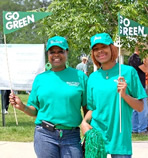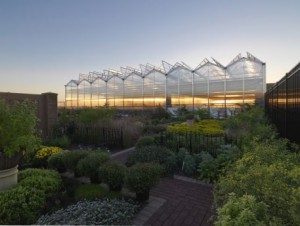A few weeks ago marked the summer solstice, and I venture the following exhortation as we relish (or endure) this season of heat and long days.
We need to get out of our cars and get back on our bikes. Few things you do this summer will be better for your mind, body, and spirit.
Whether you’re a twenty-something or a senior, bikes are low-impact exercise machines that folks of all ages can use safely and pleasurably. My five-foot-tall arthritic Grandma Dorothy, bless her departed soul, rode a three-wheeler well into her seventies. And my spry 71-year-old father just got out his 1950s-era English road bike — the same one he rode through Joliet as a teenager — and started cruising again. Dad, I salute you!
Don’t have a bike? Just get one. Try a garage sale, where bikes abound; or even a neighbor’s garage, where I once scored a dusty vintage Schwinn Varsity ten-speed for fifty bucks. I’ve already put hundreds of miles on this classic and fully expect to be riding it for the next thirty years.
Feeling cheap? In case you haven’t noticed, gasoline is no bargain. For the price of a few fill-ups, you can get a very good bike at a local establishment and soon recoup your investment hand over handlebar. After that, you’re saving money every time you ride.
Old bike need a tune-up beyond oiling the chain and inflating the tires? If you’re not up to doing it yourself, take it to your local repair shop, get the job done right, and feed our hometown economy rather than the multinational oil production/pollution complex. (Yes, I’m liberal, but I’m also patriotic.)
Beyond these undeniably compelling reasons to get on your bike is something intangible but no less important: the experience of riding.
On a bike, life is palpably different. You feel the wind and sun. You breathe fresh air instead of recycled, air conditioned exhaust. Out of necessity, you pay attention to your surroundings. You use your muscles — remember them? — and challenge yourself physically. You glide by queued-up cars and see envious glances from the imprisoned drones therein.
On a bike you discover new ways to travel to your favorite places — back streets and bike paths where car traffic is lighter and life moves more slowly. You say hello to people working in their yards or to kids playing on the sidewalk, and in return get a smile or a friendly wave. In the process you start to see your community in a much different way — and, I would humbly suggest, a much better way.
Dear readers, I therefore beseech thee: get on your bikes! If you do, be sure to check back with me at the autumnal equinox and let me know how your summer went.
The essay, one of my monthly op-ed pieces for the Joliet Herald-News, was originally published as “See Joliet, Will County by Bicycle” on 23 June 2011.



